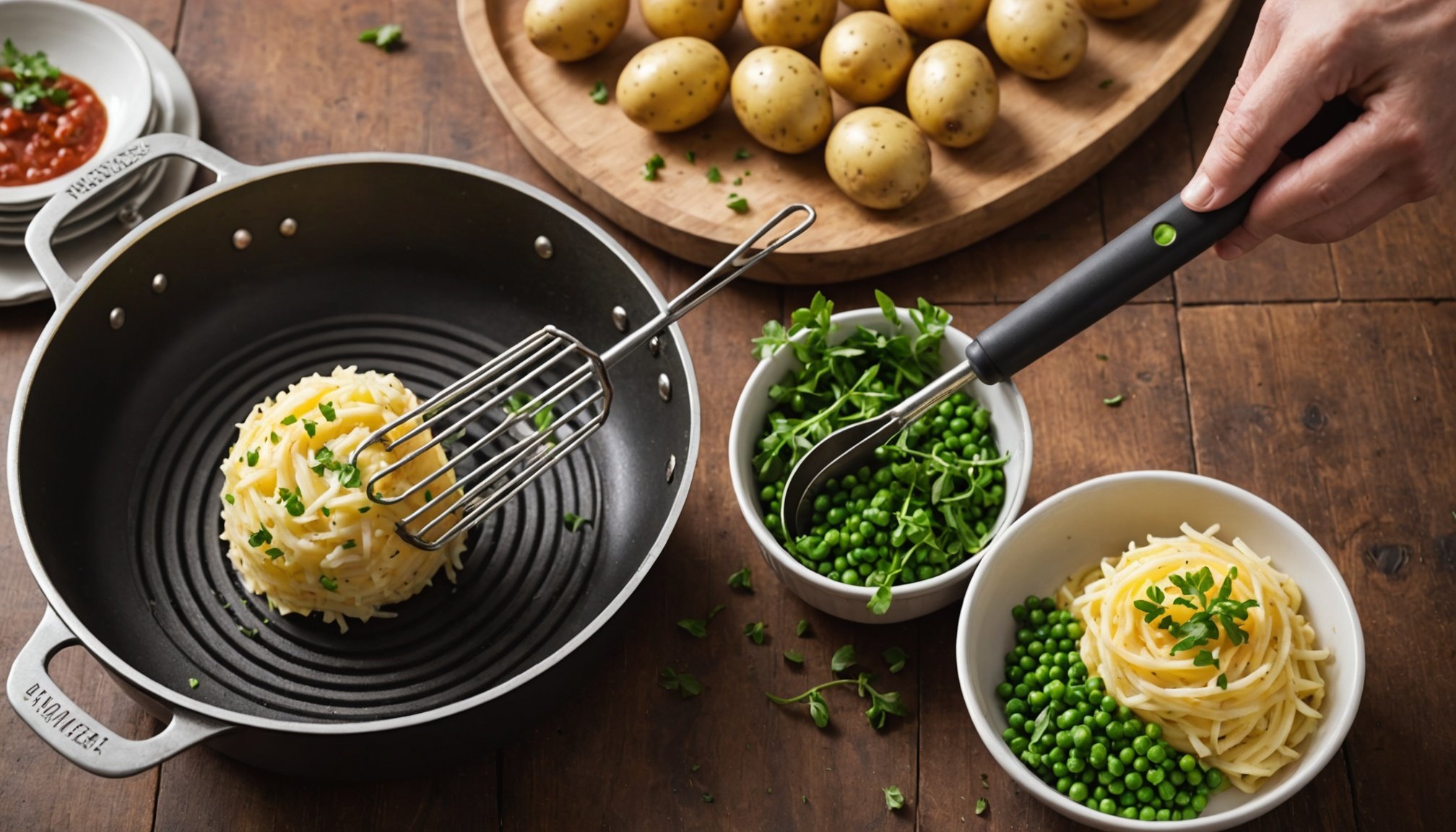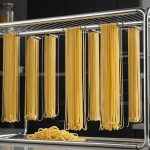Understanding Potato Mashers
Potato mashers are integral kitchen tools that come in various types, each suited for different culinary needs. When choosing a masher, it’s important to consider not just the type, but also its compatibility with your cookware, especially if you use non-stick pots and pans.
Types of Potato Mashers
-
Traditional Mashers: These are the most common, featuring a perforated plate or a zig-zag design. They are perfect for simple mashing tasks, providing a rustic texture. However, care should be taken when using them on non-stick surfaces to avoid scratching.
Have you seen this : Unleash your kitchen”s potential: the essential guide to selecting the ideal pasta drying rack for space savings and optimal drying performance
-
Ricer Mashers: Known for their precision, ricer mashers push potatoes through a grid of small holes, creating smooth and creamy results. They are ideal for achieving uniform texture, making them perfect for dishes like gnocchi. They’re typically gentle on non-stick surfaces, which is a bonus.
-
Electric Mashers: For those seeking convenience, electric mashers offer automation and speed. They handle larger batches effortlessly, saving time and energy. Nevertheless, electric variants might not be suitable for certain delicate non-stick cookware due to their powerful motorized action.
Each type offers distinct advantages, making it crucial to choose the right one based on your cooking style and kitchen tools.
Key Features to Consider
In choosing a potato masher, consider the materials used. Stainless steel offers durability and strength, ensuring effective mashing. Plastic and silicone options are lighter and more affordable, making them ideal for non-stick compatibility, preventing scratches. Wooden mashers, while traditional, might lack the robustness required for tougher jobs.
Material Choices
- Stainless Steel: Known for its strength and durability, perfect for mashing without bending.
- Plastic/Silicone: Light and non-abrasive, suitable for non-stick surfaces, ensuring no damage.
- Wood: Traditional choice, functional but may lack durability over time.
Design Aspects
When evaluating a potato masher, look for designs that enhance usability, like ergonomic handles that provide a firm grip. A carefully designed masher ensures fatigue-free use. Moreover, check for features that ensure safe interaction with non-stick cookware to avoid scratches.
Durability and Effectiveness
Assess the durability of materials by considering their resistance to bending and breaking. Non-stick compatibility is essential to preserve the condition of your cookware. Evaluate how effectively a masher performs with different potato textures. An effective masher will ensure a smooth, lump-free consistency, essential for a perfect mash.
Maintenance and Care Tips
To ensure the longevity of your kitchen tools, particularly a potato masher, understanding proper care is essential. Best practices for cleaning vary by material. For stainless steel mashers, wash them promptly with warm, soapy water to avoid corrosion. Afterward, dry them thoroughly to prevent rust. If you have a silicone-covered masher, gentle hand washing is recommended to preserve its non-stick properties. Avoid using abrasive sponges that could damage the surface.
Storage tips are equally crucial. To maintain the integrity of non-stick cookware, keep your potato masher in a separate drawer, or use a divider to prevent it from bumping against other utensils. This reduces the risk of scratching or bending, which can affect performance.
Regular inspection is vital to ensure safe use. Look for any signs of wear and tear, such as bent wires or compromised handle grips. Addressing these issues promptly can prevent potential mishaps during use. By integrating these simple care tips into your routine, you can extend the life of your potato masher and maintain its efficiency.
Buying Guide for Potato Mashers
Choosing the right potato masher involves more than just picking the first option you see. When buying potato mashers, there are essential factors you must consider to ensure an optimal purchase.
Firstly, assess the material. Options range from stainless steel, which offers durability and ease of cleaning, to plastic, which is lighter but might not last as long. The type of handle is also critical for comfort and effectiveness. Look for ergonomic designs that minimize hand strain.
Next, consider the size of the grid. Fine grids work well for creamy mashed potatoes, whereas larger grids are suitable for chunkier results.
A thorough selection guide often includes a comparison of top-rated potato mashers. User reviews and expert opinions can highlight models like the innovative Zyliss, known for its ergonomic handle, or the classic OXO Good Grips, praised for its balance between comfort and performance.
For the best deals, explore a variety of retail options. Online marketplaces often offer competitive prices, but don’t overlook physical stores where quality can be verified firsthand. Special sale events and discounts provide opportunities to purchase high-quality potato mashers at reasonable prices, ensuring both value and functionality.
Visuals and User Reviews
Visual aids play a crucial role in comprehending diverse potato masher designs and functions. Customers often find it easier to decide which masher suits their needs when they can see it in action. Whether in the form of images or demonstration videos, visual resources help convey the effectiveness and utility of a product, making the purchasing process more informed.
User reviews are equally significant because they provide real-world insights and experiences. Customer feedback often highlights both the advantages and limitations of various potato mashers. For instance, some users praise a model for its comfortable grip and efficiency, while others might criticize the durability or cleaning difficulty. This balanced feedback is indispensable for potential buyers to weigh their options prudently.
Visuals found in reviews, such as snapshots of mashers or pictures showing mashed potatoes’ consistency, further enrich the information pool. Though links to videos and images cannot be provided here, they are typically accessible in user reviews, enhancing understanding by showcasing the different potato masher models in action. This way, buyers can align their purchase with personal preferences and kitchen needs.











